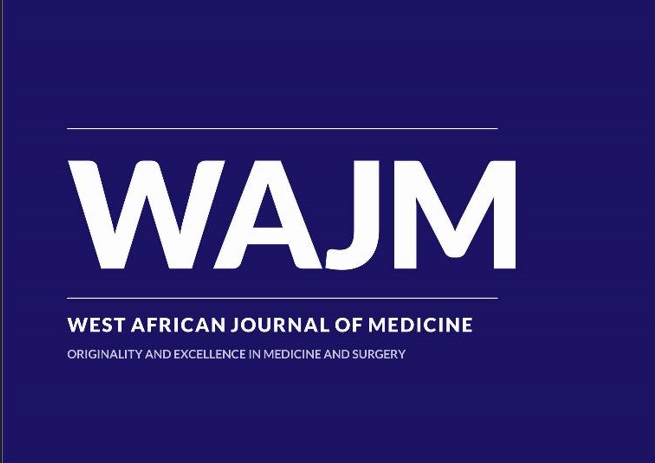ORIGINAL: Plasma L-Arginine in Sickle Cell Anaemia Patients in Crises and its Correlation with Markers of Severity of Disease
West Afr J Med. 2021 April; 38(4): 366-373 PMID: 33902958
Keywords:
Hyperhaemolytic crisis, L-arginine, Sickle Cell Anaemia, Vaso-oclussive crisisAbstract
Introduction/objectives: Sickle Cell Anaemia (SCA) is a chronic haemolytic and inflammatory disorder characterized by repeated vaso-occlusive (VOC) and hyperhaemolytic crises (HC). These crises determine the quality of life of SCA patients. This study estimated the plasma L-arginine levels in SCApatients during crises (HC and VOC), and correlated these levels with the markers of inflammation in the patients.
Methods: A cross-sectional study comprising of 120 consenting adults (60 SCA patients and 60 HbAA controls). The SCA were grouped as SCA patients in VOC or SCA patients in HC and HbAA controls. All SCA patients presented at the emergency room or the daycare unit of Haematology Department, University College Hospital, Ibadan, Nigeria. Blood samples were collected and haematological parameters and plasma L-arginine levels were determined.
Results: There were 30 SCA patients in VOC, 30 SCA patients in HC, and 60 HbAA controls with age ranging from 18 to 58years. The controls had a higher haematocrit than the SCA patients (HbAA>SCA VOC> SCA HC, p<0.001) in each pair wise analysis. The VOC and the HC groups had higher mean White Blood Cell (WBC), platelet count, Absolute Neutrophil Count (ANC), Absolute Lymphocyte Count (ALC), Absolute Monocyte Count (AMC), and reticulocytes count than the HbAA controls. Similarly, the HC group had higher mean WBC, platelet count,ANC,ALC,AMC, and reticulocytes count, and a lower mean percentage irreversible sickle cell than the VOC group. The mean plasma L-arginine was significantly higher in the HbAA control group than those of SCA patients in crises (HbAA controls>SCAVOC>SCAHC, p < 0.001), and higher in the SCAVOC group than in the HC group. There was no significant correlation between plasma L-arginine levels, reticulocyte count, markers of VOC severity and markers of inflammations.
Conclusion: The plasma L-arginine levels of SCA patients in VOC and HC were lower than those of the HbAA controls. The degree of reduction was however marked in patients in hyperhaemolytic crisis. There was no significant association between the plasma L-arginine levels and the markers of inflammation in the studied patients. The findings in this study buttress the need for consideration of L-arginine supplementation in patients with SCA, especially during acute hemolytic crises.


